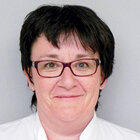Neurosurgery is the medical speciality involving the surgical treatment of disorders of the nervous system, namely the brain, the spinal cord and the spinal nerves, as well as the skull and spine that envelop them.
Neurosurgery forms part of the clinical neurosciences and therefore collaborates very closely with other specialities. The most important specialities include neurology (diagnosis and non-surgical treatment of diseases of the nervous system), neuro-oncology (treatment of tumours), neuroradiology (specialised imaging of the brain and spine), neurorehabilitation and orthopaedics.
The neurosurgeon performs microsurgical techniques using an operating microscope and a set of extremely fine instruments, which make it possible to work with great precision and limit the size of the resulting scars. Minimally invasive surgery is another modern technique applied at the Valais Hospital.
The technical equipment available to the neurosurgery department in Sion corresponds to that of a university hospital with microscope, neuronavigation system (“GPS” for the brain), the O-arm imaging system that facilitates accurate guidance for the placement of screws in the spine, intraoperative electrophysiology by a neurologist who measures nerve activity during surgery, as well as cerebral and spinal endoscopic systems. This makes it possible to cover the entire spectrum of neurosurgery, with the exception of certain highly specialised areas of medicine such as vascular neurosurgery (aneurysms) and deep brain stimulation for the treatment of Parkinson’s disease.
A large part of neurosurgical activity is carried out on an emergency basis, and this medical speciality calls for extensive technical facilities (imaging, operating microscope, cerebral or spinal endoscopes, navigation, special instruments, neuroanesthesia, etc.). These technical facilities allow the neurosurgeons at the Valais Hospital to perform the majority of neurosurgical operations at the Sion hospital, which is a designated “trauma centre”.
Some rare lesions such as a cerebral aneurysm that require a special infrastructure are not treated, but transferred to a university hospital. This is also the case for radiosurgery and paediatric neurosurgery. These transfers are facilitated by a collaboration agreement between the neurosurgery department of Valais Hospital and that of the Vaud University Hospital (CHUV), with which it maintains regular contact. Regular exchange also takes place with colleagues in Brig, including the neurosurgeon Dr Perrig, who comes to Sion to operate on brain tumours in patients from Upper Valais.
The neurosurgery department of Valais Hospital performs over 600 operations per year.



